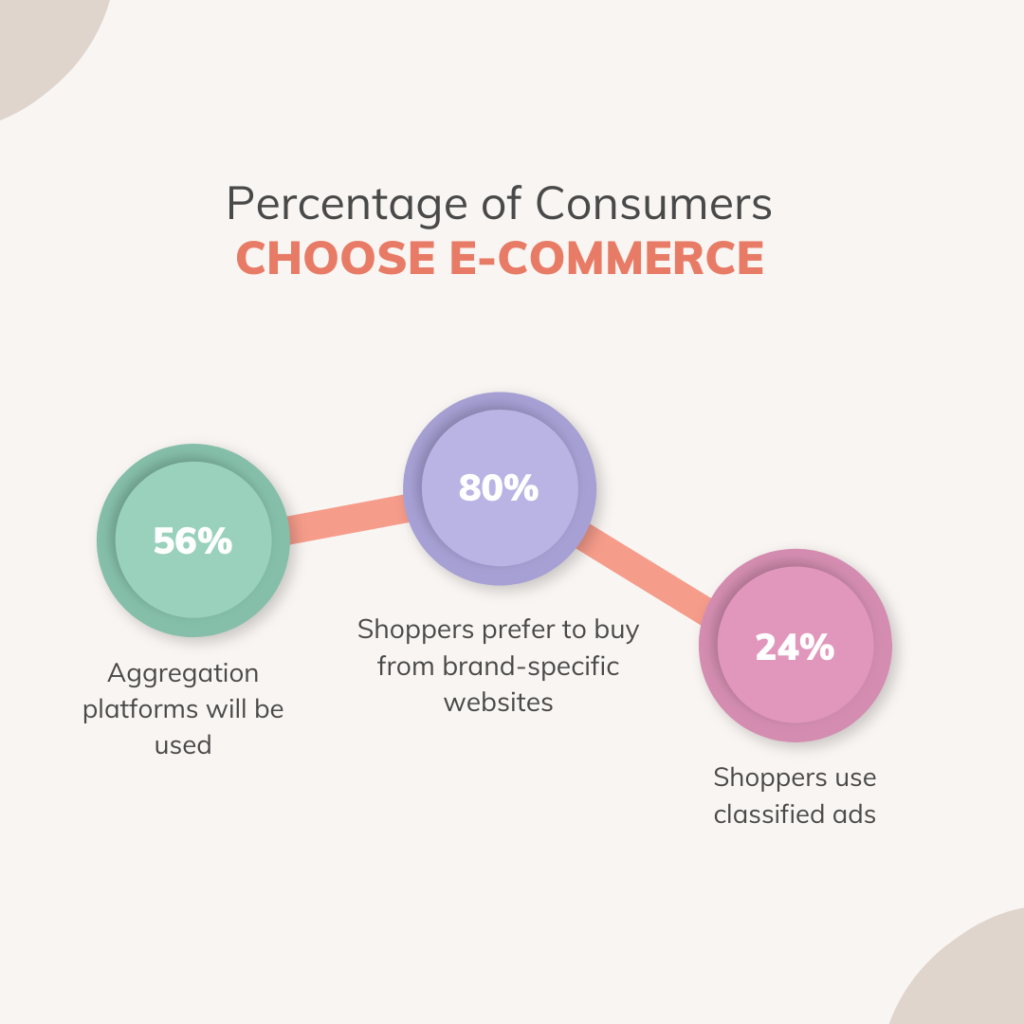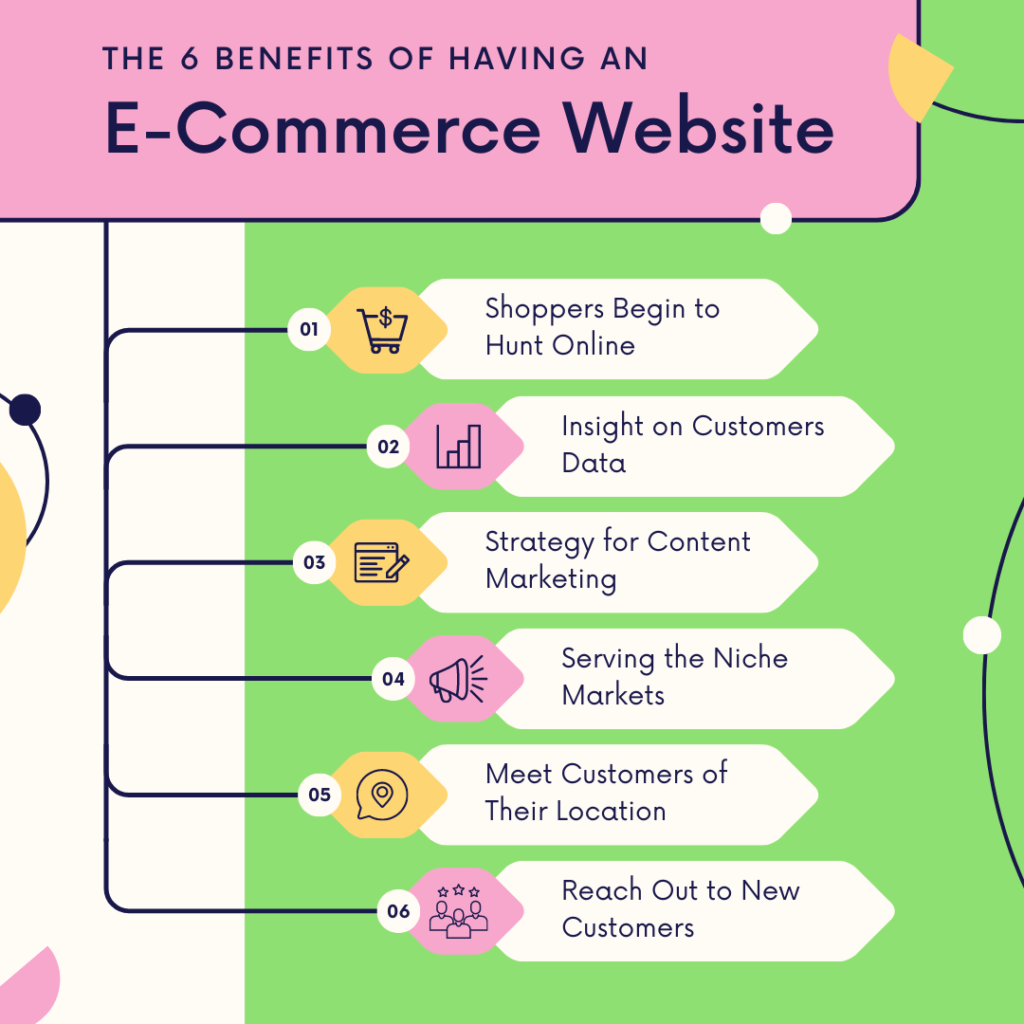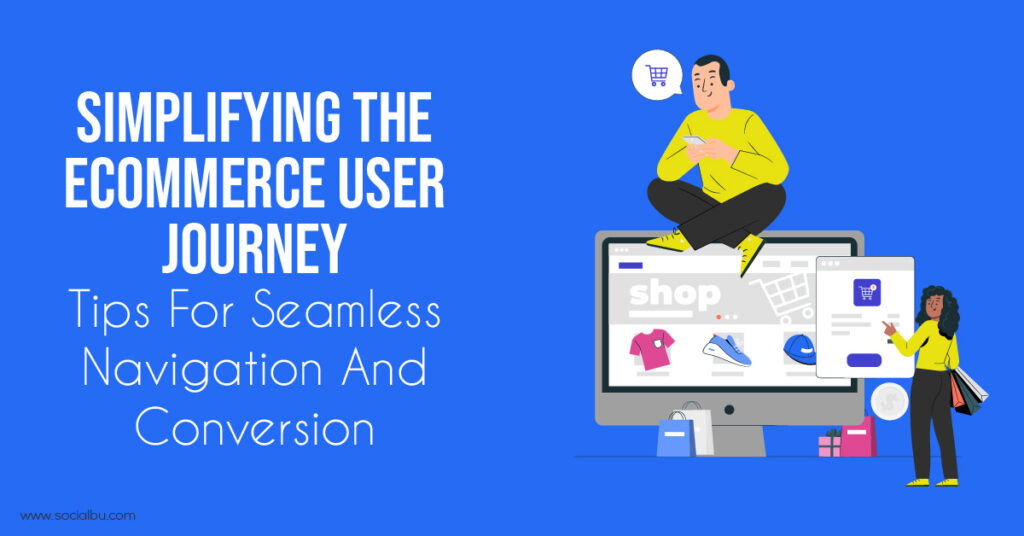In the rapidly evolving world of e-commerce, providing a seamless user journey is crucial for attracting and retaining customers. With countless online stores vying for attention, simplifying the user experience becomes a top business priority.
One of the critical elements in achieving this goal is ensuring seamless navigation throughout the entire e-commerce platform. Businesses can streamline the shopping experience, boost customer engagement, and ultimately drive conversions by optimizing the user journey from start to finish.
This article will explore valuable tips and strategies to simplify the e-commerce user journey, focusing on efficient navigation and conversion optimization.
So, whether you are an e-commerce store owner or a web designer, these insights will help you create a user-friendly and conversion-oriented e-commerce user flow.
Let’s set you apart from the competition.
Understand User Behavior
A comprehensive understanding of user behaviour is essential for simplifying the e-commerce user journey.

By monitoring user behaviour, e-commerce sites can identify areas causing confusion and difficulty in navigation or conversion.
This information will provide insight into necessary changes. It includes streamlining the checkout process, improving website design and layout, or altering the content structure on certain pages.
Additionally, it’ll allow the e-commerce business to implement targeted marketing campaigns. It helps to reach users at different stages of their buying cycle, increasing engagement and improving customer experience.
Optimize Website Structure
Optimizing website structure can drastically improve the customer experience and foster trust in the company. An effective website should provide users with an intuitive, user-friendly navigation system that is easy to understand and follows a logical flow.
It should also include features such as search bars, breadcrumbs, and filters that allow users to locate specific products or information on the site quickly. Furthermore, providing clear calls-to-action (CTAs) throughout the site is beneficial for users to know what to do next to complete their tasks.
Streamline Product Search
Streamlining product search can be integral to providing customers with a positive and rewarding online shopping experience. E-commerce businesses should design their websites to make navigation as simple as possible, allowing shoppers to find what they need quickly and easily.
E-commerce can do this using the following approaches:
- Doing good categorization of products within the website structure, as well as practical search functionality.
- Enabling autocomplete and suggesting features by default to improve user experience.
- Adding filtering options allows customers to narrow their search results quickly to locate what they seek.
- Including the ability to refine searches using different parameters can help shoppers find precisely what they need.
With the thoughtful implementation of these techniques, customers can enjoy a successful shopping journey on their e-commerce platform.
Improve Product Pages
Improving product pages is essential to creating a positive and enjoyable online shopping experience for customers. A well-designed product page is organized, easy to navigate, and contains all the information customers need to make an informed purchase decision.
Product descriptions should focus on benefits rather than features clearly and concisely. Utilizing visuals such as high-quality images or videos also helps enhance the customer’s understanding of a product. Optimizing these elements can significantly reduce the website exit rate by keeping visitors engaged through to conversion.
To improve the user experience on product pages, provide the following:
- Accurate sizing charts
- Detailed instructions for use or installation, if applicable
- Warranty information
- Customer reviews/ratings
- Related products
Implement Intuitive Checkout Process
Creating an intuitive checkout process ensures customers have a smooth and efficient online purchasing experience. Keep the intuitive checkout processes streamlined and straightforward, with minimal steps necessary for completion. The more steps there are in the checkout process, the greater likelihood that customers will abandon their purchase before the end.
Furthermore, all forms must include clear instructions and labels for the customers to understand.
Integrating a moving cost estimator tool into your e-commerce platform can streamline user experience by providing valuable insights into shipping expenses, ensuring transparency and enhancing customer satisfaction throughout the purchasing process.
Ensure Mobile Optimization
Ensuring that the e-commerce website or application is optimized for mobile usage is paramount. Mobile optimization ensures the users can easily navigate the mobile-optimized website or app, featuring quick load times, ideal page sizes, and touchscreen-friendly functions.
It also requires consideration of user experience regarding how easy it is to complete tasks such as payment processing and account creation on a smaller screen size.

By optimizing the e-commerce presence for mobile devices, businesses can increase their reach and appeal to more customers who use smartphones or tablets exclusively.
Leverage User Feedback
Leveraging customer feedback can be a powerful tool to optimize e-commerce experiences. Gathering and analyzing user feedback is essential for understanding what customers want from their online shopping experience and how the site can better cater to them.

Take user feedback as an opportunity to improve the overall user journey by addressing any issues in the navigation process or other aspects of the website. You can use surveys, polls, or questionnaires sent out after purchase and collect comments on product pages or reviews on each page.
Additionally, using sentiment analysis tools helps identify patterns in customer responses. It indicates areas where improvements are needed. By listening to what customers say, website owners and marketers can identify opportunities for improvement and make changes accordingly.
Simplify The Returns And Refunds Process
Making returns and refunds as straightforward as possible can enhance the customer experience. E-commerce websites should display a concise returns policy and guide customers on initiating returns or refunds.
Customers must receive timely updates when their return or refund request has been received. To make this process even more seamless, retailers may provide an automated tracking system that allows customers to keep track of every step in the process.
In addition, offering free shipping for both returns and purchases can reduce costs associated with returning items and encourage customers who are undecided about making a purchase.
Moreover, many e-commerce stores have begun offering flexible payment options, such as paying in instalments. It allows buyers more time to decide if they want to keep the purchased item without having to pay upfront all at once.
Optimize Website Speed
Optimizing website speed is essential for providing customers with a positive online experience. Website speed can be improved in various ways, such as by compressing images and code, reducing redirects, caching pages, and utilizing content delivery networks (CDNs).
Additionally, leveraging browser caching allows the client to store static content so that it does not load from the server each time a user visits the page. This helps reduce server load times and improves overall page speed.
Utilize Live Chat And Customer Support
Providing customers with excellent customer support ensures an enjoyable user experience. Businesses should consider implementing live chat and customer support methods for interacting with customers on their e-commerce websites.
Utilizing live chat functions on product descriptions or checkout pages allows customers to ask questions and receive real-time answers from customer service representatives. Alternatively, companies can provide customer support via email or phone for more in-depth issues requiring extended resolutions. Outsourcing these functions can be a cost-effective and efficient solution to provide real-time, quality service.
Conclusion
Implementing strategies to simplify the e-commerce user journey is essential for businesses to remain competitive in today’s digital landscape. Optimizing website structure, streamlining product search, improving product pages, and leveraging user feedback are steps needed to ensure customers have a smooth online shopping experience. It’s worth noting that when businesses prioritize customer satisfaction, they can enjoy long-term loyalty and success.







